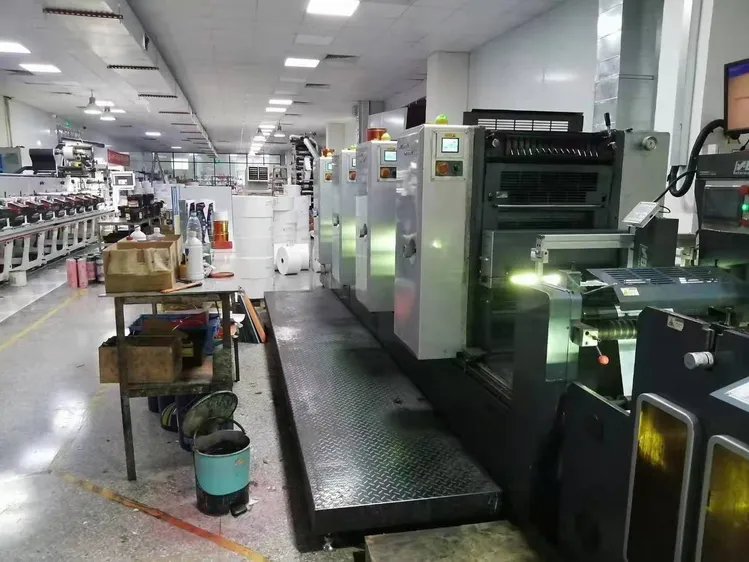The global counterfeit market statistics present a concerning picture of the world’s economy. Counterfeiting is not just about fake luxury goods; it extends to critical areas such as pharmaceuticals, electronics, and even food products. Understanding these statistics is crucial for business professionals aiming to protect their interests and navigate this challenging landscape.

What is the Counterfeit Market?
The counterfeit market involves the production and distribution of fake or unauthorized replicas of real products. This illegal trade impacts economies worldwide, harming businesses and consumers alike. According to various reports, the counterfeit market is valued at billions of dollars annually.
Scope of the Global Counterfeit Market
The scope of the counterfeit market is vast, affecting numerous sectors. From fashion brands to technology companies, no industry is immune. The rise of e-commerce has further fueled this growth, making it easier for counterfeiters to reach unsuspecting consumers.
Impact on Different Industries
Counterfeiting affects industries differently. In the fashion industry, it leads to significant revenue loss and damages brand reputation. In pharmaceuticals, it poses a severe risk to public health. The electronics sector faces challenges with counterfeit components affecting product safety and performance.
Geographical Distribution
Counterfeiting is a global issue, but certain regions are more affected than others. Asia, particularly China, is often cited as a major hub for counterfeit production. However, the effects are felt globally, with Europe and the Americas experiencing significant challenges in combating this issue.
Statistics on Counterfeit Goods
According to the Organisation for Economic Co-operation and Development (OECD), counterfeit goods account for approximately 3.3% of world trade. This staggering figure highlights the scale of the problem and the need for concerted efforts to tackle it.
Counterfeit Pharmaceuticals
The pharmaceutical industry is particularly vulnerable to counterfeiting. The World Health Organization (WHO) estimates that around 10% of medical products in low and middle-income countries are substandard or falsified, posing a significant threat to patient safety.
Counterfeit Electronics
Counterfeit electronics are prevalent in the market, with fake components leading to safety hazards and inferior product performance. The global electronics industry faces billions of dollars in losses annually due to counterfeit products.
Challenges in Combating Counterfeiting
Combating counterfeiting requires a multi-faceted approach involving governments, businesses, and consumers. One of the main challenges is the sophisticated nature of modern counterfeiting operations, which often involve complex supply chains and networks.
Role of Technology
Technology plays a crucial role in the fight against counterfeiting. Innovations such as blockchain and AI are being used to track products and verify authenticity. For instance, e-commerce solutions are employing advanced security measures to protect consumers and brands alike.
Regulatory Measures
Governments worldwide are implementing stricter regulations to combat counterfeiting. Initiatives such as the European Union’s Intellectual Property Rights Enforcement Directive aim to strengthen enforcement and provide better protection for intellectual property rights.
Impact on Businesses
Businesses suffer significant losses due to counterfeiting. It not only affects revenue but also harms brand reputation and customer trust. Companies are investing heavily in anti-counterfeiting measures to protect their interests.
Strategies for Businesses
Businesses are adopting various strategies to combat counterfeiting, including investing in advanced security technologies and collaborating with law enforcement agencies. Some are also engaging in consumer education initiatives to raise awareness about the dangers of counterfeit products.
Case Studies
Several companies have successfully tackled counterfeiting through innovative approaches. For example, security printing techniques have proven effective in protecting products and maintaining brand integrity.
Future Outlook
The fight against counterfeiting is ongoing, with new challenges emerging as counterfeiters adopt more sophisticated techniques. However, advances in technology and stronger international cooperation offer hope for reducing the impact of counterfeit goods.
Emerging Trends
Emerging trends in anti-counterfeiting include the use of digital solutions and enhanced supply chain transparency. Companies are increasingly leveraging these tools to stay ahead of counterfeiters and protect their products.
Opportunities for Innovation
There are significant opportunities for innovation in the fight against counterfeiting. Companies and researchers are exploring new technologies and methodologies to improve product authentication and prevent counterfeiting.
Conclusion
The global counterfeit market statistics reveal a pressing issue that affects economies, businesses, and consumers worldwide. While the challenge is significant, there is optimism that through collaboration, technology, and innovation, the impact of counterfeiting can be mitigated. Business professionals must stay informed and proactive to protect their interests and contribute to the broader fight against counterfeit goods.

Frequently Asked Questions
What are counterfeit goods?
Counterfeit goods are unauthorized replicas of real products, often produced illegally and sold under the guise of authentic items.
How do counterfeit goods affect the economy?
Counterfeit goods cause significant revenue losses for businesses, harm brand reputations, and can pose safety risks to consumers. They also contribute to job losses and economic instability.
What measures are being taken to combat counterfeiting?
Measures include stricter regulations, technological innovations like blockchain, and international cooperation to enhance enforcement and protect intellectual property rights. For more insights on anti-counterfeit strategies, visit Science Direct.
This article contains affiliate links. We may earn a commission at no extra cost to you.







